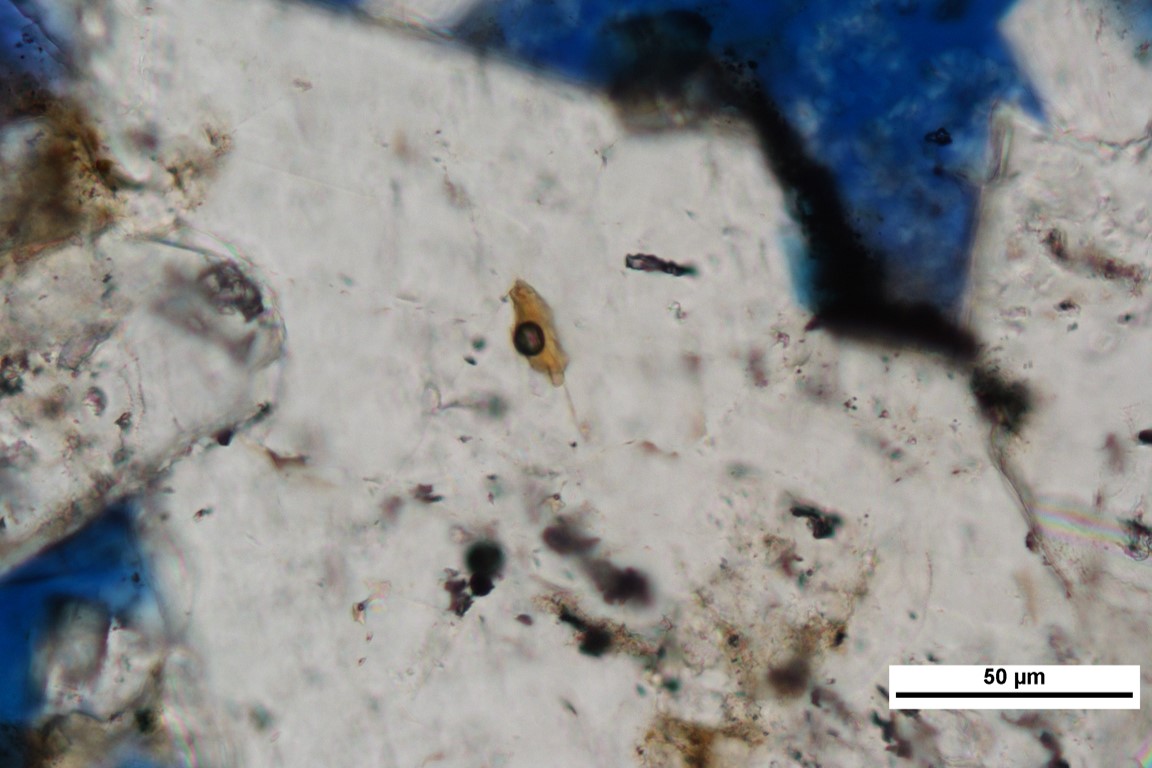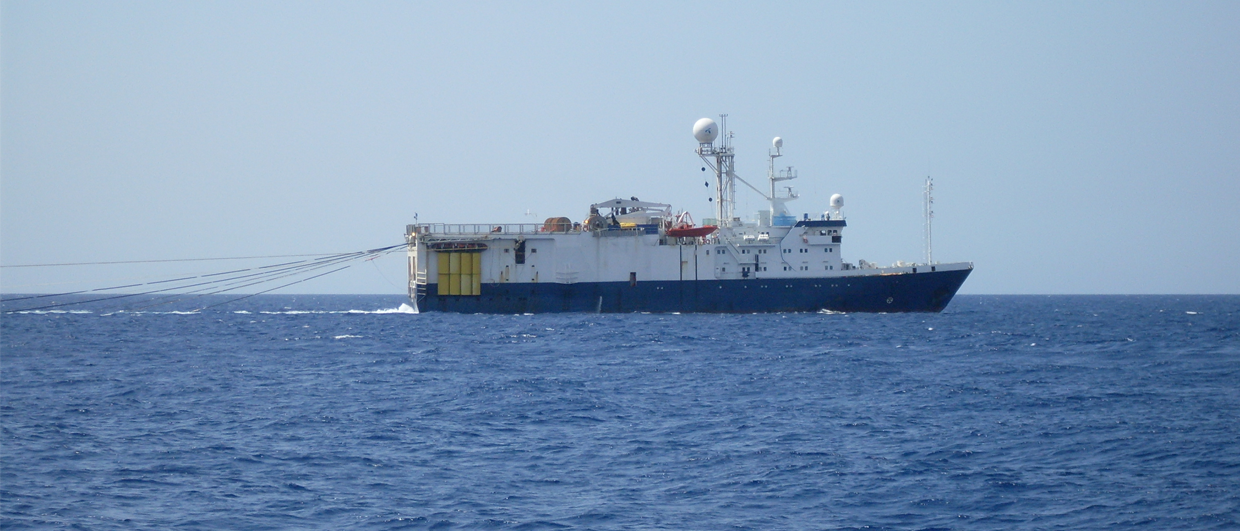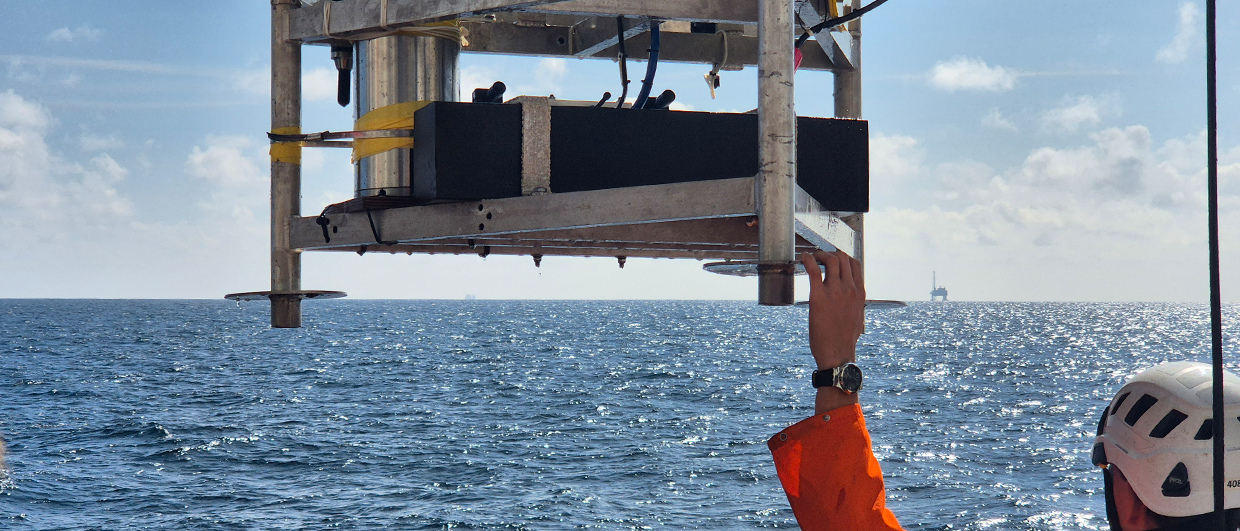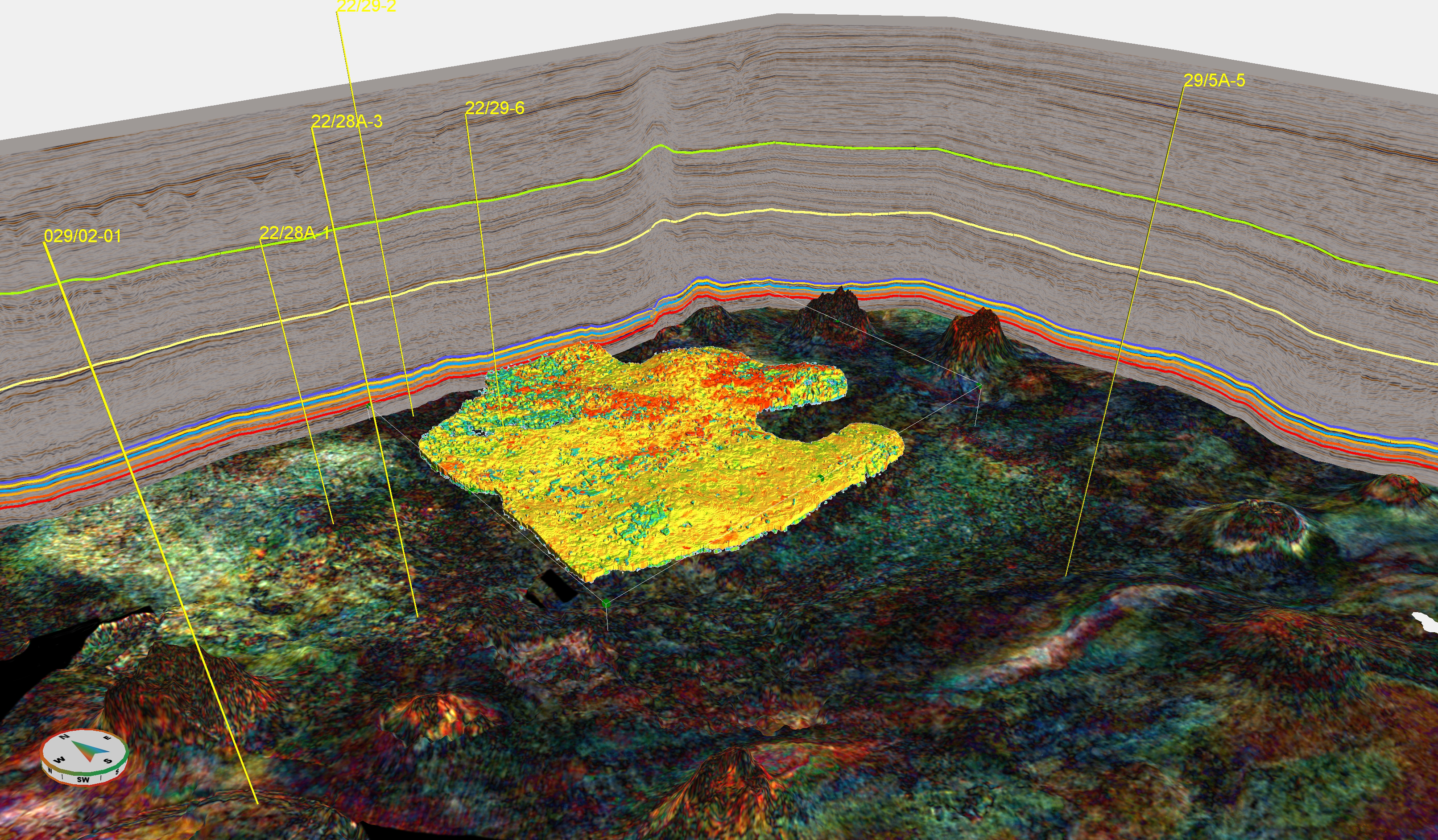Two radically different opinions concerning the temperatures of oil expulsion from Upper Jurassic source rocks in the North Sea have recently been put forward, as we reported on several occasions.
On one hand, professor Dag Karlsen from the University of Oslo suggests that oil expulsion takes place at temperatures of 130 – 165°C or possibly even higher, a point of view that is widespread within the oil industry.
In contrast, now retired senior advisor at Equinor Per Arne Bjørkum proposes an alternative model where CO2-mobilized heavy oil is expelled from the source rocks at temperatures less than 50°C and subsequently matures towards a lighter composition by addition of hydrogen within the reservoirs that received the heavy oil.
See: Should we explore for oil in a completely different way? – Per Arne Bjørkum
See: Oil theory in deep water – Dag Karlsen
Intrigued by the discussion on source rocks, the timing of oil and gas generation and the implications on exploration? Attend the NCS Exploration – Recent Discoveries Conference (8 & 9 June) next month, where Eric Michael from APT and Per Arne Bjørkum (former Senior Advisor at Equinor) will both present and discuss their ideas on conventional and less conventional viewpoints.
Hard data
One type of data that can help to settle this controversy is the distribution of oil inclusions trapped within various diagenetic minerals present in the reservoirs oil migrated into. The study of these oil inclusions indicates that oil emplacement took place at temperatures of 70-90°C or less. This implies that the area in the North Sea and elsewhere where source rocks have expelled oil could be larger than commonly assumed.
Olav Walderhaug, petrologist at Equinor, has studied thousands of sandstone samples from hundreds of wells across the Norwegian North Sea. Equinor has now kindly permitted to share some observations from this major exercise, which adds to the ongoing debate on the timing of oil expulsion. In the following he shares his insights.
In this article, I will focus on oil inclusion data from 215 wells in the Norwegian sector of the North Sea where the data base includes samples from accumulations containing more than 80 % of the area’s hydrocarbon reserves not located in the chalk reservoirs. Observations from all the major oil accumulations in sandstone reservoirs in the area are included in the data base.

Diagenetic minerals are key
Oil inclusions are found in several diagenetic minerals in North Sea sandstones, including quartz cement, calcite cement, dolomite cement, albitized plagioclase, K-feldspar overgrowths, overgrowths on apatite grains and barite cement (Figure 1).
Three types of oil inclusions are especially useful for constraining temperatures of oil emplacement; oil inclusions trapped in the dust rims between quartz clasts and their diagenetic quartz overgrowths, oil inclusions present within albitized plagioclase grains, and oil inclusions within carbonate cements that engulf quartz grains that lack quartz overgrowths due to the carbonate cement filling the pore system before quartz overgrowths had a chance to form.
The oil inclusions in these cements are especially useful for two reasons; firstly, these cement types are present in many sandstones, and secondly, it is very often possible to set clear constraints on the temperatures of formation for the cements and thus for the temperatures of trapping of the oil inclusions they contain.
Locked-in by quartz
Plotting the content of quartz overgrowth cement as determined by point-counting against temperature for 3351 sandstone samples from the Norwegian sector of the North Sea and the Haltenbanken area reveals that quartz cement sourced from stylolitic dissolution of detrital quartz is not found at temperatures less than 70 – 80°C and increases in abundance as burial depth and temperature increase (Figure 2).
This indicates that oil drops that attached to the surfaces of quartz grains and were subsequently covered by quartz cement were in place at these temperatures. This further implies that the sandstones with oil inclusions in the dust rims on quartz grains were oil-filled at 70 – 80°C.

Locked-in by feldspar
Similarly, plotting the distribution of albitized plagioclase versus temperature for 2564 samples shows a rather abrupt change from no albitized plagioclase to essentially total albitization at a temperature of approximately 90°C (Figure 3).
The presence of oil inclusions in albitized plagioclase is consequently a very clear indication of oil emplacement at temperatures of 90°C or less. Where carbonate cement containing oil inclusions engulfs the quartz grains and has prevented formation of quartz overgrowths (Figure 1), this clearly points to oil emplacement at temperatures less than 70 – 80°C.
Data from more than 100 NCS fields
Analysing the results from mapping of oil inclusions in the mentioned diagenetic cements in 3200 samples from 215 well bores in the Norwegian sector of the North Sea shows that there are 102 examined fields and discoveries that contain oil inclusions in diagenetic cements, 68 of these are currently oil-filled whereas 34 contain gas, dominantly wet gas according to the classification of the Norwegian Petroleum Directorate.
The presence of large numbers of oil inclusions in these gas-filled reservoirs is probably a result of gas having displaced oil. Eight presently oil filled reservoirs without oil inclusions were also found, but these are shallow low temperature dominantly Paleocene sandstones without diagenetic cements that could trap inclusions.
Twelve reservoirs contain dry gas and no oil inclusions despite these reservoirs containing diagenetic cements that could have trapped oil inclusions, this suggests that these twelve reservoirs have probably never contained oil. It is also important to note that in the approximately one hundred examined sandstone reservoirs that contain neither oil nor gas, oil inclusions are absent in all but one instance.
The total database therefore clearly indicates that formation of oil inclusions requires the presence of an oil column. Where coring is continuous through the oil-water contact the oil inclusions are present only above the contact and tend to decrease in abundance toward the contact.

Implications for timing of oil generation and migration
The 102 presently oil or gas-filled reservoirs with oil inclusions all contain oil inclusions in one or more of the three diagenetic phases: quartz overgrowths, pre-quartz cement carbonate cement and albitized plagioclase, plus often in various other cements with uncertain temperatures of precipitation.
Thirty-eight of the reservoirs contain oil inclusions in calcite and more rarely dolomite cement that engulfs quartz grains without quartz overgrowths, an observation that clearly points to oil filling these reservoirs at temperatures of less than 70 – 80 °C when quartz overgrowths start to precipitate.
Of the remaining 64 reservoirs with oil inclusions, 59 contain oil inclusions in the dust rims between the original quartz grains and their quartz overgrowths. This shows that oil drops were able to attach to the surface of the detrital quartz before quartz cement started to precipitate, implying oil emplacement at 70 – 80 °C or earlier.
Four of the last five oil or gas-filled reservoirs with oil inclusions contain oil inclusions in albitized plagioclase, as do most of the other oil or gas-filled reservoirs, strong evidence for the presence of an oil column at temperatures less than 90°C. The last reservoir contains common oil inclusions in early diagenetic K-feldspar overgrowths and has a reservoir temperature of only 64°C.
Summing up, the oil inclusion data provide very strong evidence for concluding that oil emplacement in all the 102 reservoirs took place in the temperature range 70 – 90°C or at even lower temperatures. Because a large proportion of the studied reservoirs are situated in the graben areas of the North Sea, this implies that filling of the reservoirs to a large extent took place in Cretaceous times when the Upper Jurassic source rocks were not deeply buried.
What does this tell us about the temperatures in the source rocks at the time of oil expulsion?
The Egersund Basin case study
One very instructive example is the Yme oil field in block 9/2 in the Egersund basin. The Jurassic Sandnes Formation reservoir in Yme contains oil inclusions in dust rims on quartz grains, in albitized plagioclase and in calcite cement that surrounds quartz grains without any quartz overgrowths. Oil therefore entered the Yme reservoir at temperatures of less than 70 – 80°C.
In the Egersund Basin, the maximum depth difference between the source rock, the Upper Jurassic Tau Formation, and the Yme reservoir is approximately 600 m (Figure 4). Using the present geothermal gradient in the area, this corresponds to a temperature difference between the reservoir and the deepest part of the source rock of 20°C, and 70 – 80°C plus 20°C is 90 – 100°C.
The Tau Formation source rock must therefore have expelled the oil in the Yme Field at temperatures of less than 90 – 100°C. Note that this reasoning is unaffected by any potential uplift of the area, the argument rests on the depth and temperature difference between the reservoir and the source rock, not on absolute depth or temperature.

Intra-Draupne sandstones
Some of the studied oil-filled reservoirs are Upper Jurassic sandstones encased within the Draupne Formation source rock. In such cases it is reasonable to assume that the enclosing Upper Jurassic shales are the source of the oil in these sandstones, rather than postulating long distance oil migration from a different source and penetration of far-travelled oil through the impermeable Draupne Formation shales and into the intra-Draupne Formation sandstones.
These intra-Draupne Formation sandstones contain oil inclusions in albitized plagioclase, in the dust rims on quartz grains, and in some cases also in pre-quartz cement calcite cement. Oil emplacement had therefore taken place at temperatures of 70 – 80°C or less, suggesting that the enclosing source rocks expelled oil at similar temperatures.
Also, several of the intra-Farsund Formation wet gas discoveries in block 2/4 contain very abundant oil inclusions trapped in the dust rims on quartz grains, in albitized plagioclase and in calcite and dolomite cements that enclose quartz grains without quartz overgrowths.
Oil, now displaced by gas, had therefore filled these reservoirs before temperatures reached 70 – 80°C. Depending upon whether the oil moved laterally into these reservoirs from the enclosing source rocks or from the deepest parts of the Farsund Formation in the area, the temperatures of oil expulsion would fall somewhere within the 70 – 110°C range. However, we must keep in mind that the fluid inclusion data does not disprove oil emplacement and oil expulsion at even lower temperatures.
Conclusion
The oil inclusion data presented here suggest that temperatures of oil expulsion from North Sea source rocks are not higher than 90 – 100°C, and they could be considerably less. The high temperatures of oil expulsion favoured by Karlsen can be retained only if the main source of oil in the North Sea is much older and deeper than the Upper Jurassic source rocks, but there is little evidence to support such a dramatic re-evaluation of the dominant source for North Sea oil.
This also implies that the area in the North Sea and elsewhere where source rocks have expelled oil could be larger than commonly assumed.
Whether or not the temperatures of oil expulsion are as low as suggested by Bjørkum cannot at present be determined by the oil inclusion data alone. Further developments of emerging techniques such as the clumped isotope method might possibly allow more precise determination of the temperatures of precipitation for minerals containing oil inclusions, such as various carbonate cements formed prior to quartz cementation.
This would in turn place further constraints on temperatures of oil emplacement in the reservoirs and therefore also on temperatures of expulsion from the source rocks.





